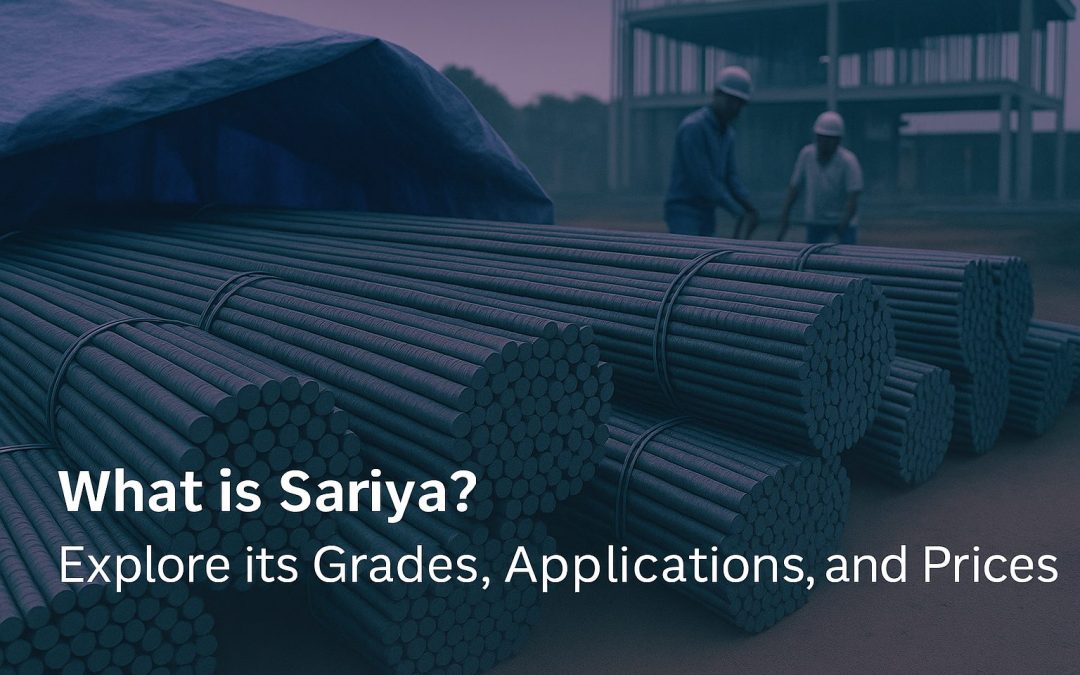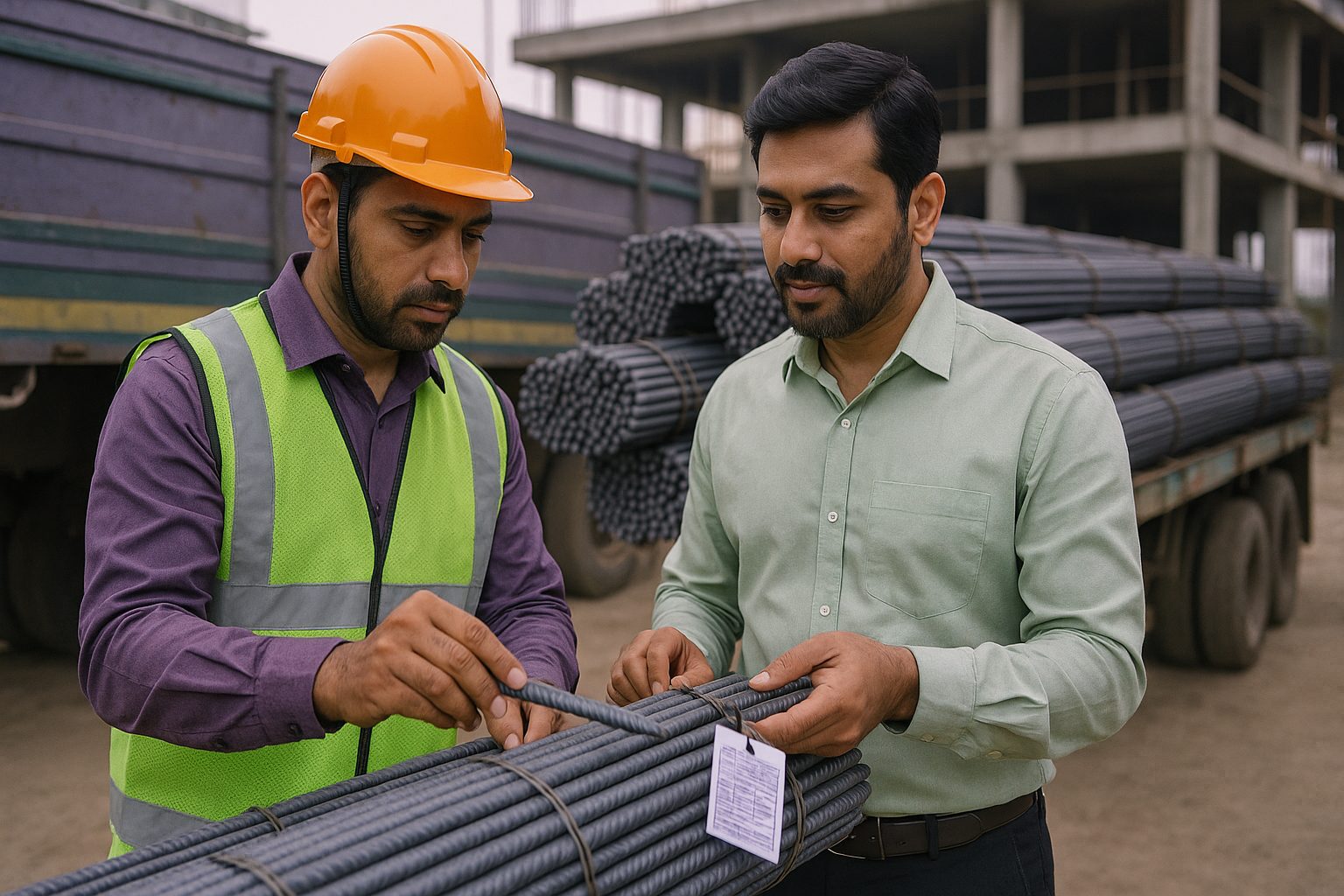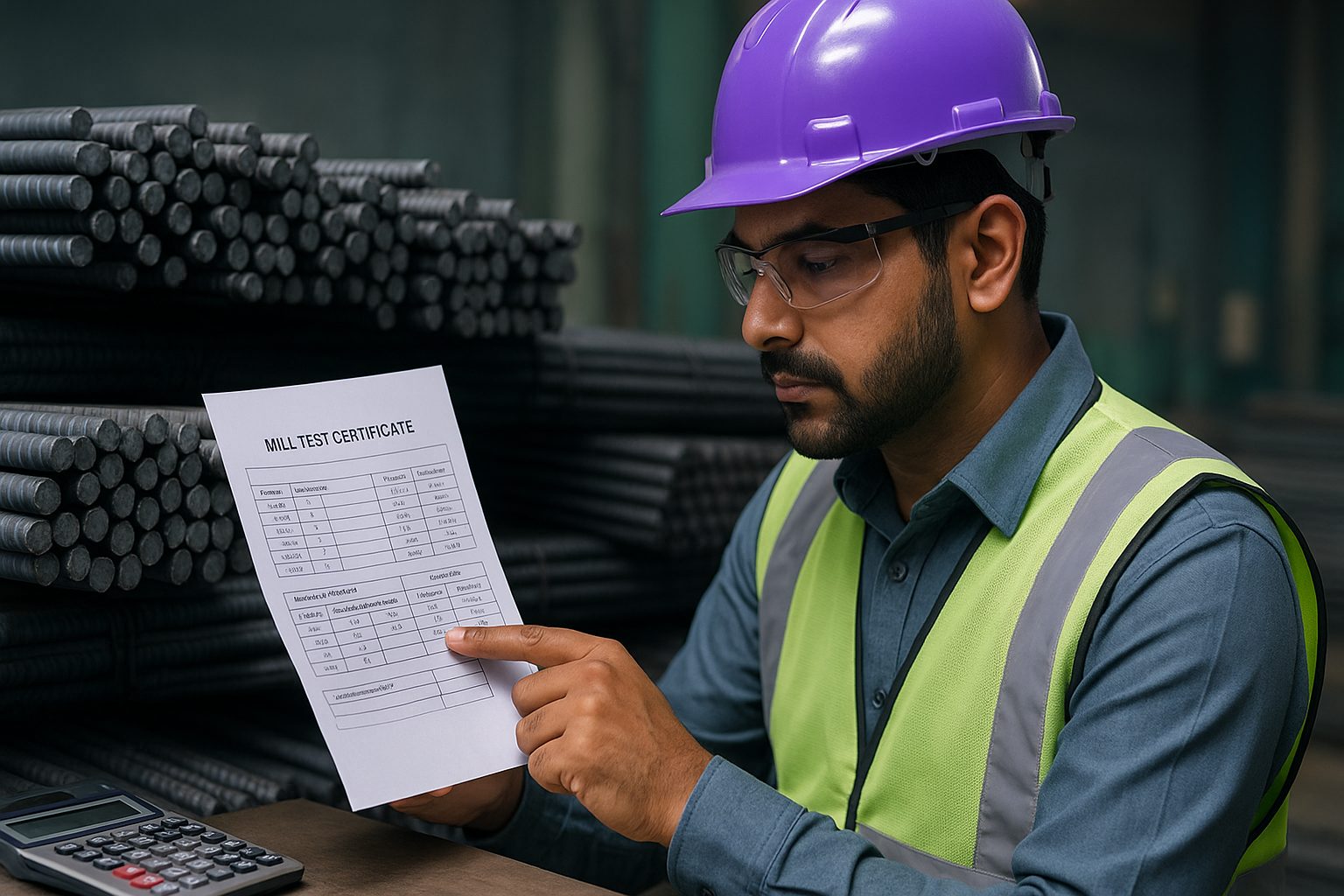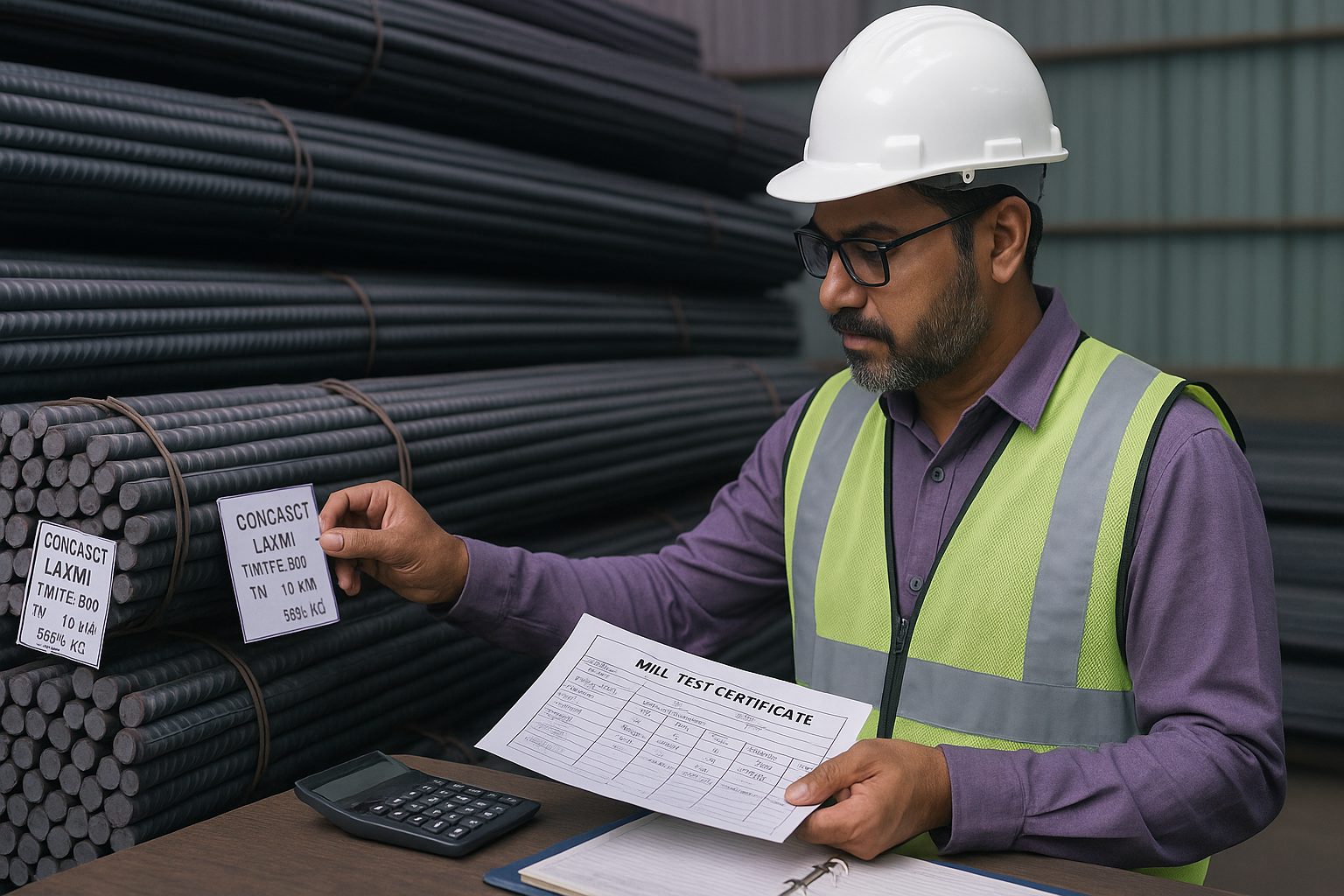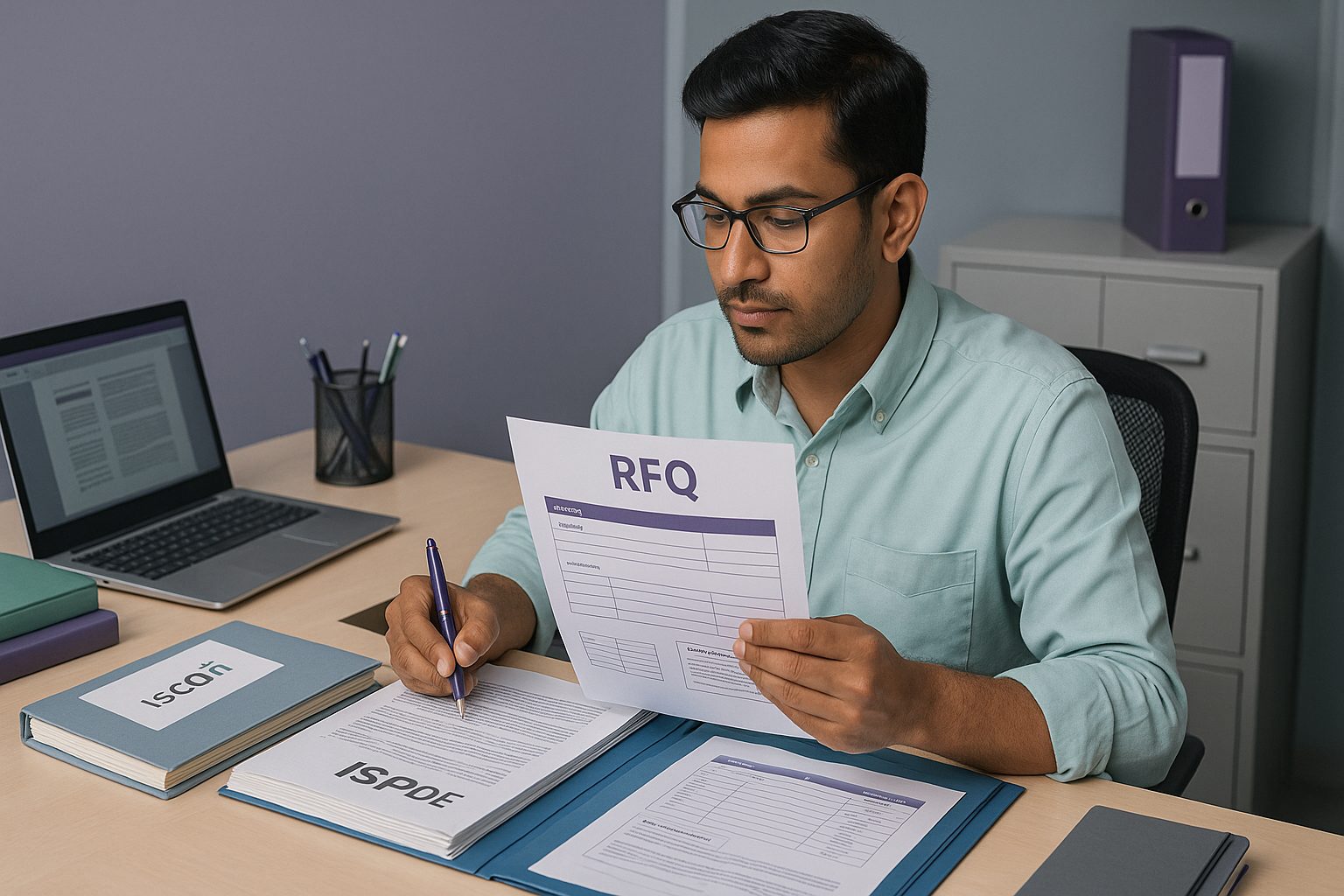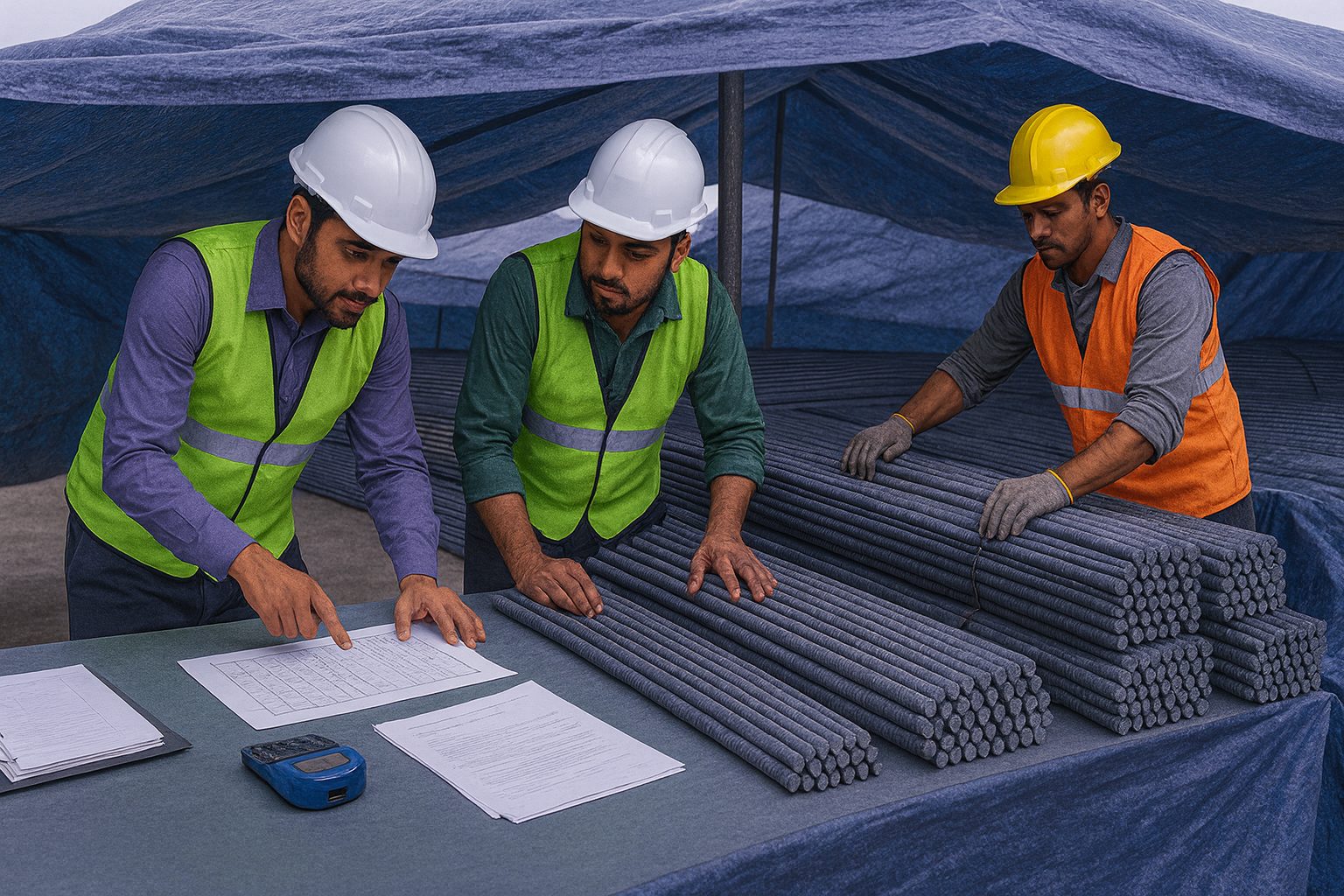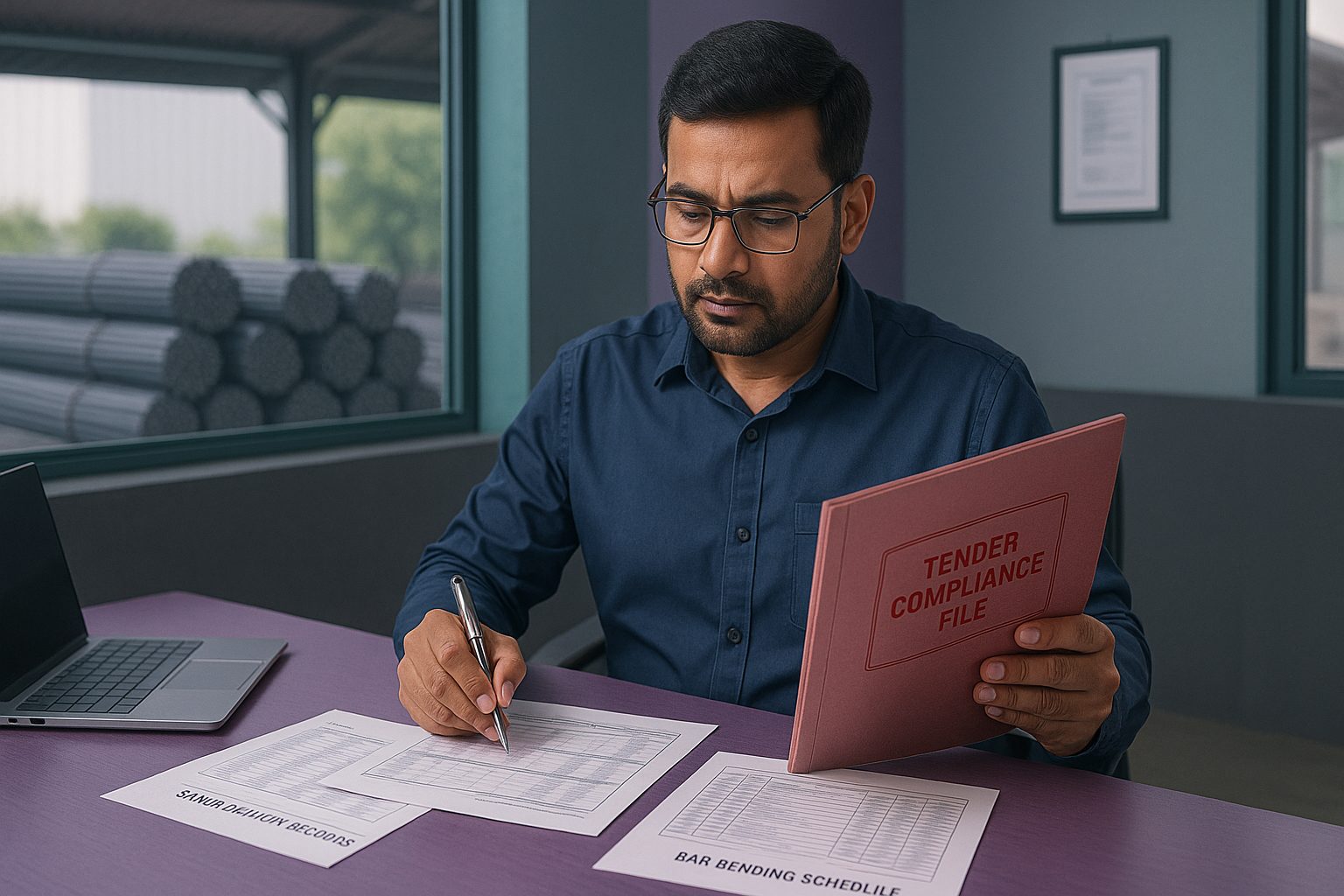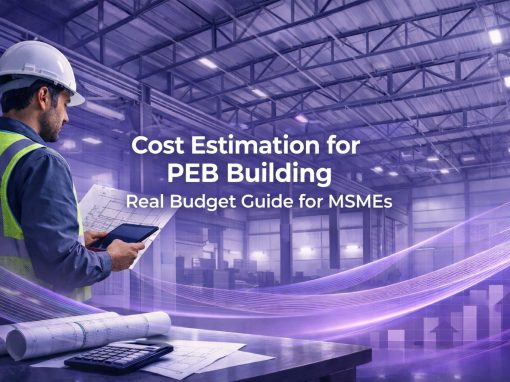Table of Contents
Introduction
In India’s construction supply chain, sariya remains the most recognised name. Sariya in english refers to steel reinforcement bars and are also known as rebars or TMT bars. From residential plots to industrial sheds, these rods define the backbone of every structure. For MSMEs engaged in construction or subcontracting, sariya is more than a commodity. It is a cost centre, a compliance checkpoint, and a driver of timely project delivery.
Most buyers check the sariya price today or scan a dealer board for rates. That snapshot is useful, but incomplete. Prices fluctuate daily, influenced by freight costs, fuel surcharges, and mill production cycles. A decision taken only on “rate per kg” can expose small firms to overruns, penalties, or audit queries.
Procurement heads in MSMEs often struggle with three recurring questions. Which grade of TMT bar suits the site conditions? How to validate compliance against the IS 1786 standard? And what extra costs creep in between mill yard and project gate? These are not academic queries. They decide whether a tender is accepted, a balance sheet stays stable, or a delivery team avoids disputes.
This guide sets out a practical view for 2025. It explains price factors, grade selection, compliance tools, tender alignment, and wastage control. The aim is to equip MSME buyers with clarity beyond rate sheets, offering them the confidence to buy better, meet standards, and protect margins in a volatile steel market.
Sariya price factors MSMEs should track
Buying sariya is never just about checking the day’s rate. It may be possible that dealers may display a sariya price today, but that figure tells just one only part of the story. And for MSMEs, avoiding the hidden factors behind the rate may leads to higher costs, cash flow stress, and procurement disputes.
Location and freight
Prices differ across regions. A bar purchased from a local mill can end up cheaper than a branded option with more transportation costs across states. Freight charges, tolls, and unloading costs quietly add to the landed price.
Credit terms
Distributors may allow 30–90 days of credit, which may seems to ease payment pressure. In reality, the financing cost is often built into the quoted rate. So, what big firms does is: they calculate landed cost, including interest; hence it is recommendable to always see the true picture.
Tax and compliance
A clean GST invoice helps you recover the input credit. In case invoices are incorrect or delayed, refunds get stuck. For businesses, working with government tenders, poor documentation can reduce profit margins, thus, inviting audit queries.
Timing of purchase
Sariya prices move with market demand. To secure the better rates, one must place orders before the monsoon, when activity slows. As during peak construction season, quotes rise sharply. Aligning orders with site schedules is a simple way to control risk.
Note: In real procurement, the “rate per kg” is just the starting point. The true cost is revealed only after freight, credit, taxes, and timing are factored in. Businesses that track these elements make stronger buying decisions.
Sariya price per kg 2025: Top 10 brands
The following table shows the average retail and dealer-level prices for leading TMT bar brands in India during August 2025. These figures are widely referenced by contractors and MSME buyers while negotiating bulk orders.
| Brand | Avg. Price per kg (₹) |
| Tata Tiscon | 72 |
| JSW | 70 |
| SAIL | 69 |
| Vizag | 69 |
| Indus | 67 |
| Meenakshi | 64 |
| Kamdhenu | 64 |
| Primegold | 64 |
| Jindal | 63 |
| A1 Gold | 62 |
In August, rates remained firm with Tata Tiscon and JSW holding the top of the range. SAIL and Vizag tracked just below, while regional brands such as Kamdhenu and Primegold were selling at lower levels. For MSMEs, the key is not just the listed price but how freight, unloading, and credit terms push the landed cost up or down. Most buyers use these published averages as a checkpoint against dealer quotes before closing an order.
Understanding sariya grades and standards
Every project demands a different type of steel. Sariya may look the same on site, but its grade defines how it performs under stress, bending, or corrosion. For businesses, getting this choice right decides both safety and cost control.
Common grades in use
- Fe 500: Reliable for general housing and commercial projects.
- Fe 500D: More ductile, hence better suited for earthquake zones.
- Fe 550D: Stronger, mostly used in towers, bridges, high-rise buildings, etc.
- CRS (Corrosion Resistant Steel): Mostly used in coastal and humid areas to prevent early rust.
All these grades are not just trade names, rather, each is defined in IS 1786, India’s reference standard for high-strength deformed bars.
Why the right grade matters
Selecting the wrong grade has a direct cost. Using Fe 500 in a coastal city may save on procurement, but rust will push up repair expenses later. Choosing Fe 550D for a small two-storey structure only inflates budgets without adding real value.
The role of IS 1786
IS 1786 sets the rules for:
- Minimum strength levels
- Flexibility requirements for seismic safety
- Allowable variation in diameter and weight
- How samples must be tested
Orders that mention this code upfront leave little room for dispute. Also, mentioning this codes brings clarity and is preferred by inspectors, auditors, and tender committees.
Key takeaway for MSMEs
It’s best to link grade to project environment and then specifying clearly in RFQs and BOQs. By doing this, it prevents supplier shortcuts and keeps tenders safe from rejection.
Practical tools for procurement teams
Price and grade are only part of the decision. Day-to-day procurement also depends on whether the buyer can verify material quickly and document it correctly. MSMEs that use simple, reliable tools reduce disputes and improve compliance.
Quick weight checks
The basic formula D²/162 helps calculate theoretical weight of a bar (where D is diameter in mm). For example, a 12 mm bar should weigh close to 0.89 kg per metre. At the delivery point, measuring a random sample against this value ensures the lot is within the tolerance allowed by IS 1786. Small firms that use this simple check can catch underweight or substandard consignments before payment.
Reading a Mill Test Certificate (MTC)
Every genuine consignment should be accompanied by a Mill Test Certificate. The MTC lists:
- Grade and ductility class
- Heat number and batch details
- Chemical composition and mechanical test results
Procurement officers must cross-check heat numbers on bundles with the MTC. If the paperwork and physical lot do not match, the material risks rejection in audits or government projects.
Delivery acceptance checklist
There must be a structured checklist, as it helps reduce mistakes. Here are some of the key points to be included:
- Confirm brand markings and also the BIS logo on every bundle
- Do match weight and size with the order sheet
- Verify GST invoice for claiming input credit
- Note any variation in bundle count or binding condition
This checklist should be signed off by the receiving officer and filed with accounts. As it prevents later disputes with both suppliers and auditors.
Tender & documentation alignment
For MSMEs, the steel price is only half the story. In government work and large contracts, paperwork decides whether a supply is accepted or rejected. A missing test certificate or a vague specification is enough to hold up payments.
RFQs and BOQs
Quotations and quantity sheets should be written without ambiguity. You should state the grade and ductility class as per IS 1786, and do mention size and tolerance. Apart form it, ask for Mill Test Certificates with heat numbers, and define the sampling method. When these points are clear, vendor quotes can be compared on equal terms.
Purchase orders
Every order should carry a reference to IS 1786. This removes doubt during inspections and shows that the buyer has followed recognised standards. It also protects the MSME if there is a dispute later.
Supporting records
Keep copies of MTCs, signed goods receipt notes, GST invoices, and lab reports where required. Having these in order prevents last-minute scrambles during audits or tender reviews.
Many small firms lose work not because their rates are high, but because their paperwork is weak. Strong documentation is as important as strong material when it comes to winning and retaining work contracts.
Wastage reduction and improving efficiency
Steel wastage is one of the biggest hidden costs for businesses. It comes from poor cutting, careless storage, and ignoring steel scrap. A few basic practices can bring this under control.
Plan with BBS
Always prepare a bar bending schedule. It tells the yard exactly what lengths and bends are required, so bars are cut once and used fully.
Standard bundles
Insist on standard bundles with tags. Mixed or loose bars increase cutting errors and leave behind odd lengths that cannot be used.
Scrap control
Collect every offcut. Record it by weight. Even if it cannot go back into the main structure, it has resale value or can be used in minor works.
Proper storage
Never dump steel on bare ground or leave it in the rain. Keep it raised on sleepers and covered. Corroded bars will fail inspection and cannot be used.
Note: Treating steel as inventory, not as disposable material, is the surest way to save cost and keep margins safe.
Conclusion
For small firms, buying sariya is never just about today’s rate. The real cost shows up once freight, unloading, credit, and tax entries are added. A cheaper quote on paper often turns out more expensive at the site.
Grades and paperwork matter just as much. Using the wrong grade or missing an MTC can lead to rejection in government jobs. One failed inspection can wipe out the margin on an entire order.
Hence, the way forward is a simple discipline, just note:
-the landed cost before confirming an order
-check bundles against IS 1786 at delivery
-keep bar bending schedules, test reports, and invoices on file.
Remembering these small steps definitely protects margins and reduces audit risk.
In 2025, firms that treat procurement as a process – not just a purchase – will have the edge. They will finish projects on time, clear tender checks, and stand stronger against bigger competitors.
Looking to procure steel?
Tata nexarc helps manufacturers, builders and MSMEs source certified steel products, compare prices, and choose the right grade as per IS codes—with complete traceability and procurement confidence.
FAQs
What is the current sariya price per kg for bulk orders?
Which sariya grade do tenders usually accept?
How can I check quality when the truck arrives?
What papers are asked for in tenders?
How does a Bar Bending Schedule help?
Do credit terms change the real price?
Why bring IS 1786 into every order?
How should steel be stored on site?
Can MSMEs claim GST input credit on sariya
What is the value of an MTC in audits?
Charul is a content marketing professional and seasoned content writer who loves writing on various topics with 3 years of experience. At Tata nexarc, it has been 2 years since she is helping business to understand jargon better and deeper to make strategical decisions. While not writing, she loves listing pop music.
